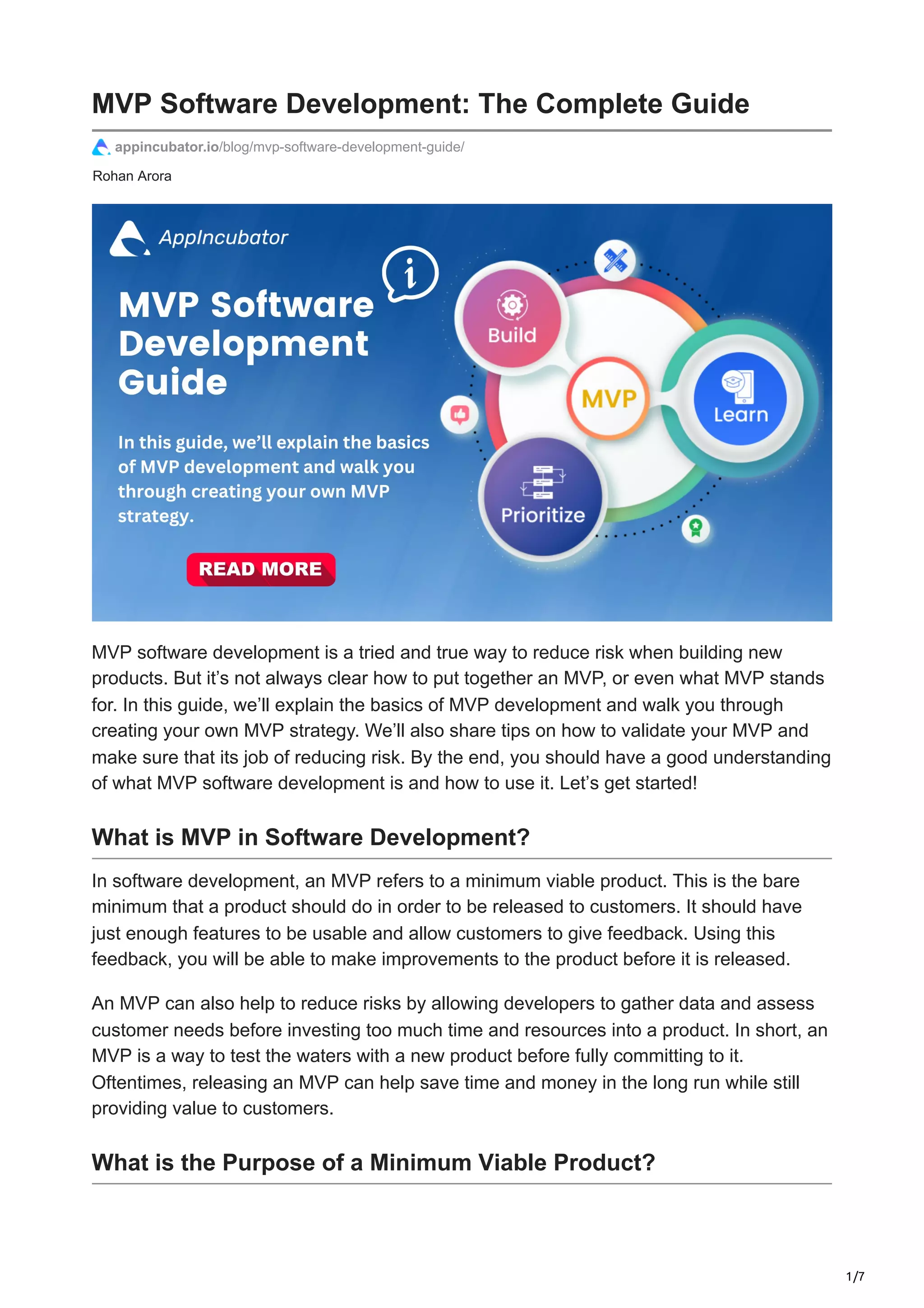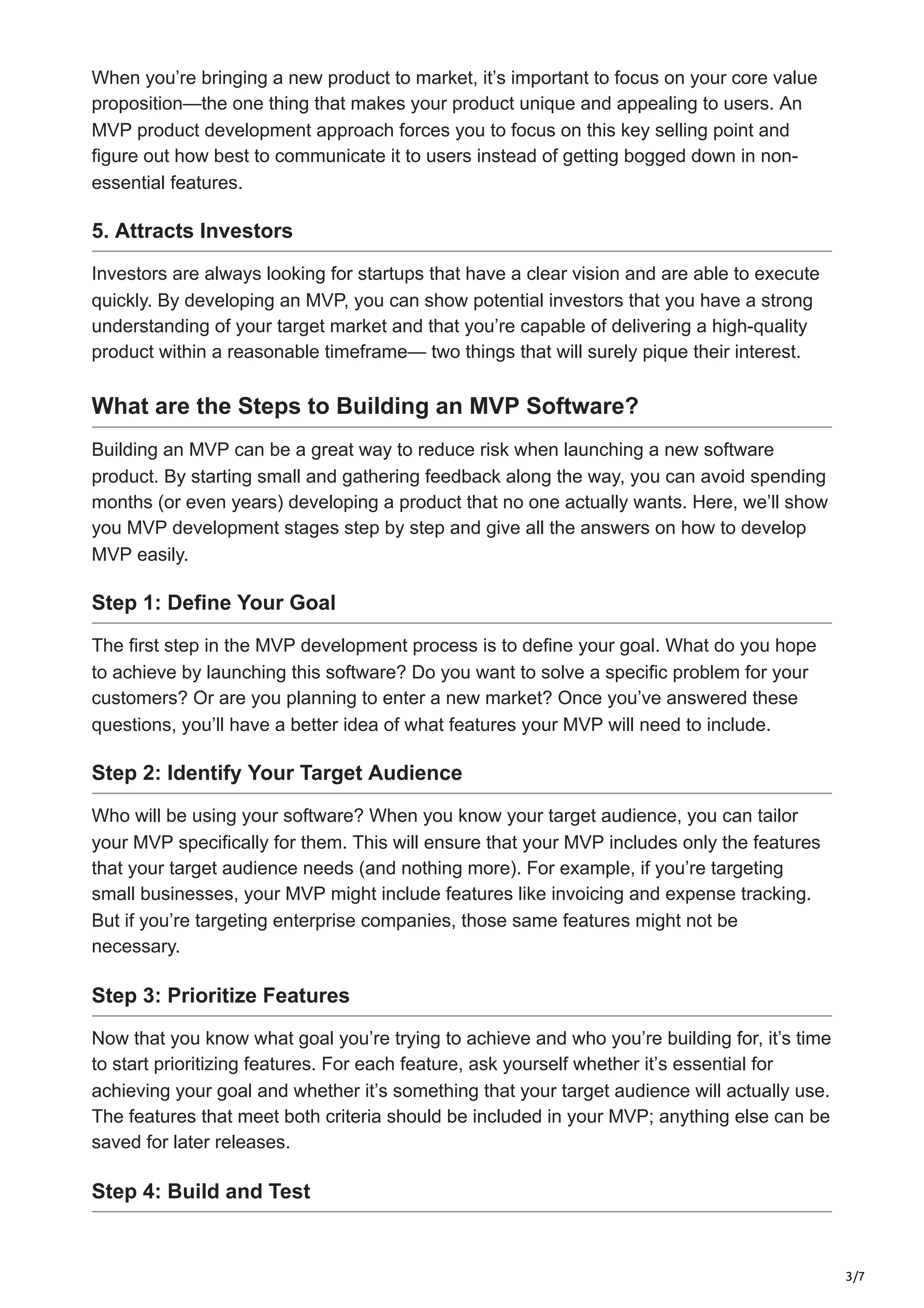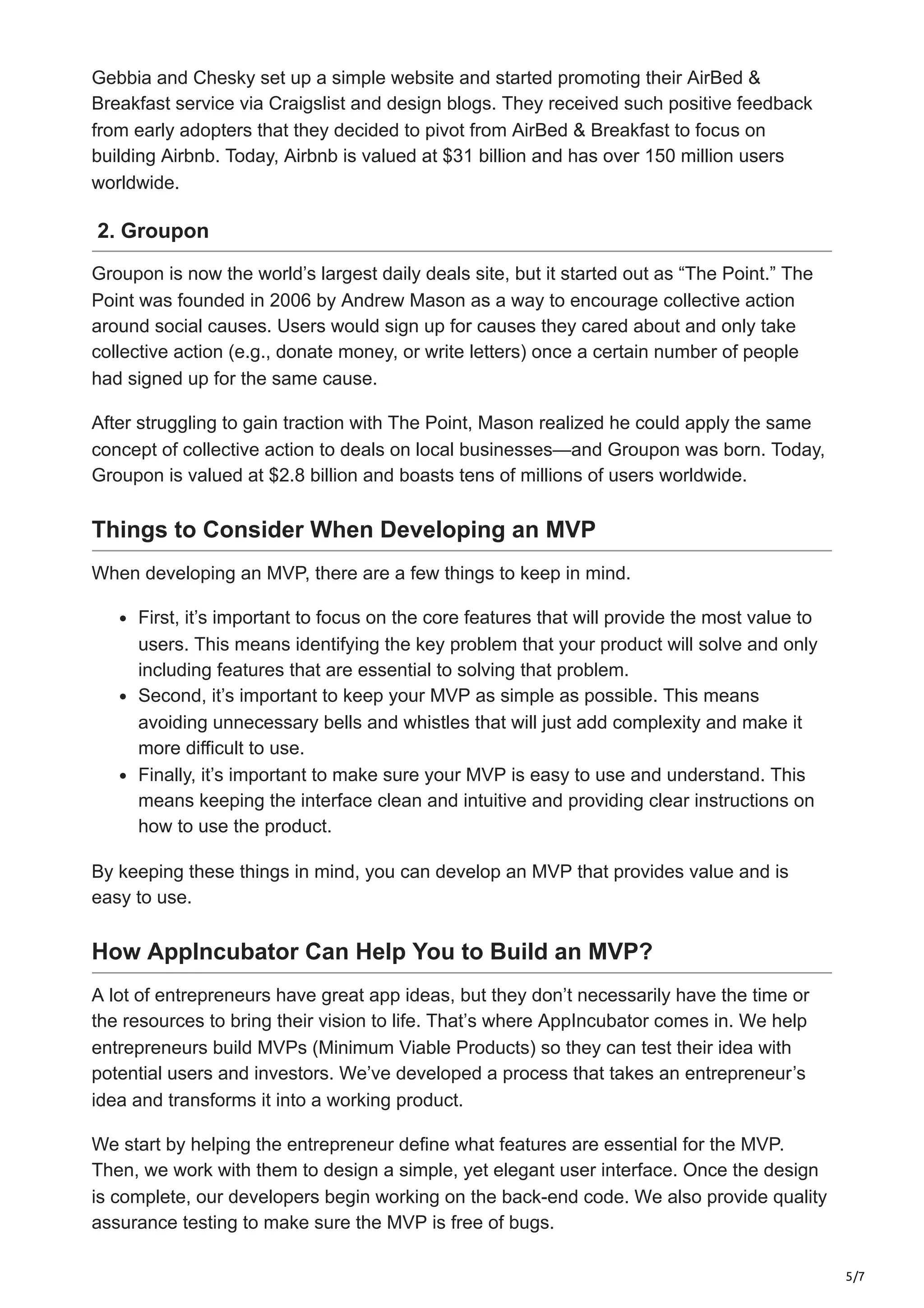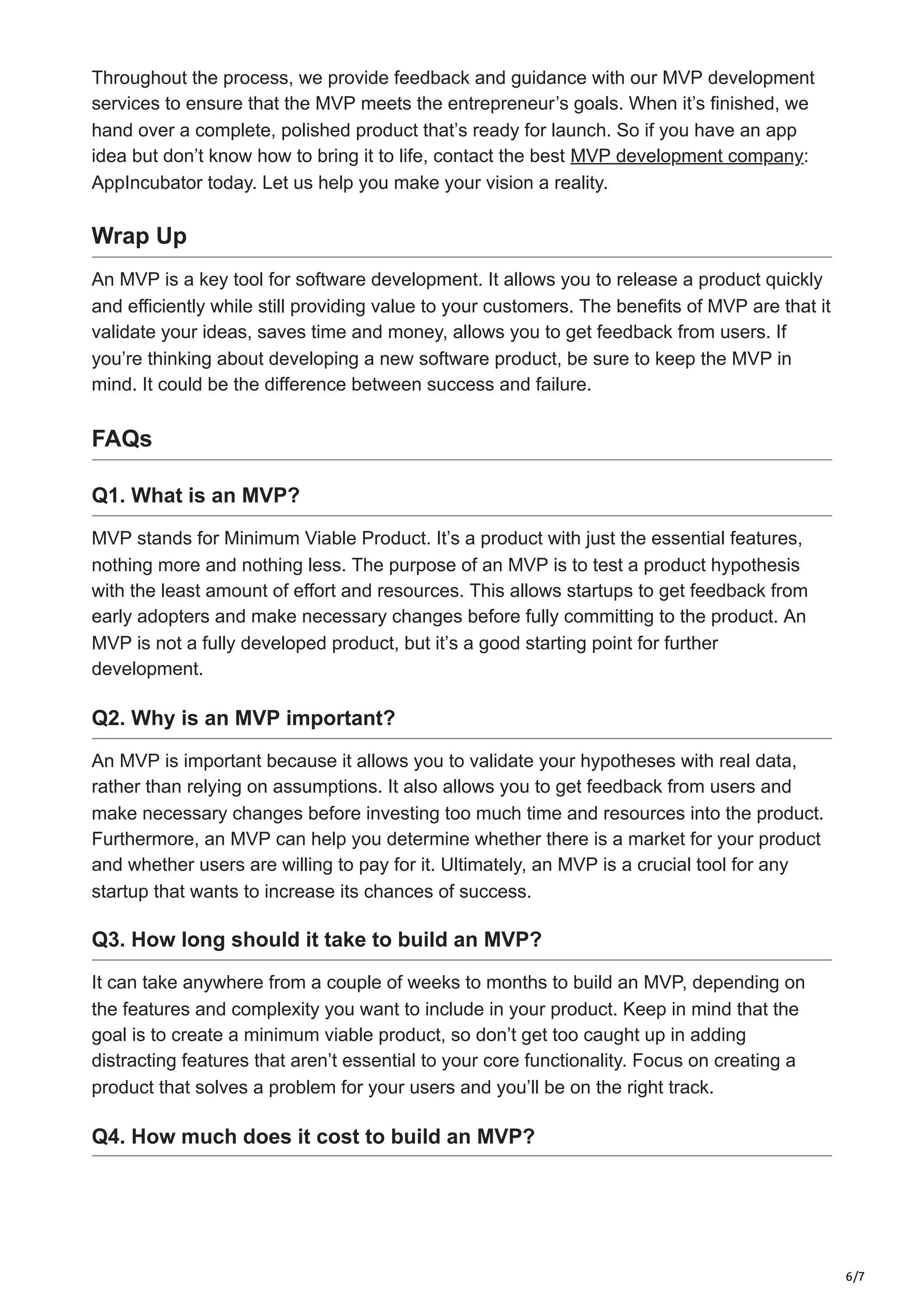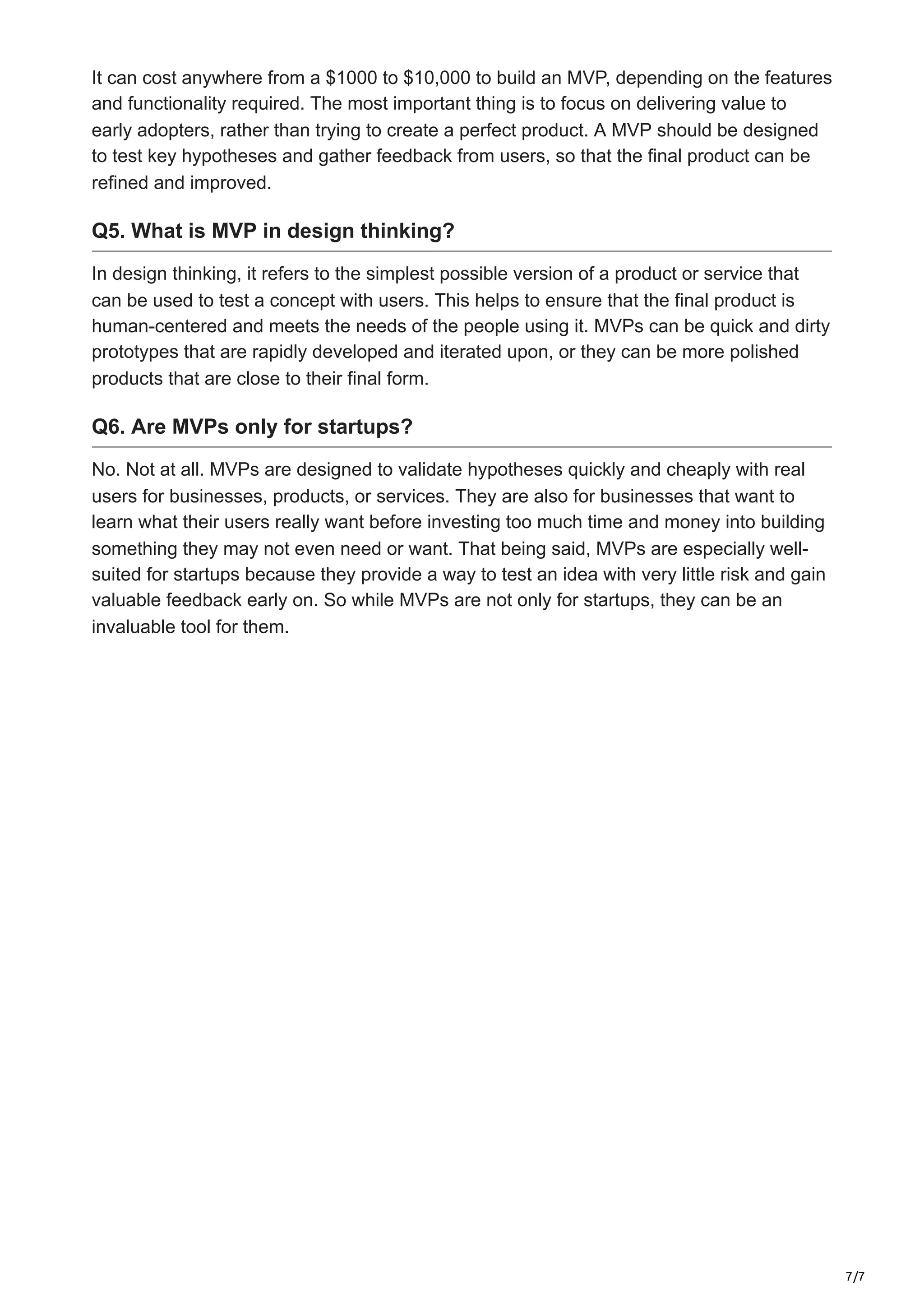The document provides a comprehensive guide to Minimum Viable Product (MVP) software development, explaining its purpose as a basic version of a product designed to gather user feedback and test a concept with minimal investment. It outlines the benefits of MVPs for startups, including cost-effectiveness, quicker time-to-market, and enhanced focus on core value propositions. Additionally, the document details steps for building an MVP and highlights examples from successful companies like Airbnb and Groupon.
